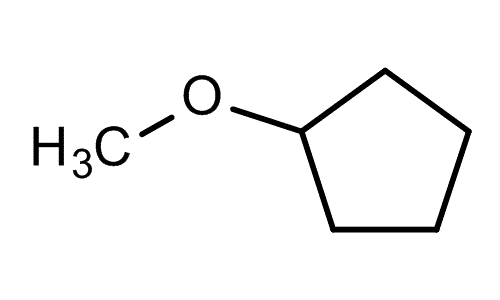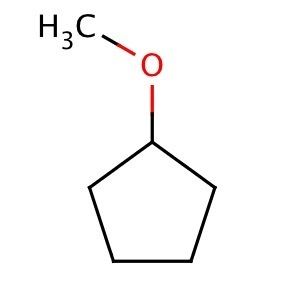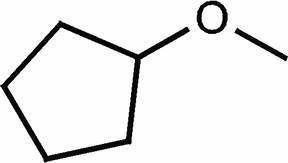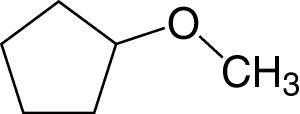Appearance Colorless clear liquid | ||
 | ||
Global and china cyclopentyl methyl ether cpme industry 2014 market trend size share growth and fore
Cyclopentyl methyl ether (CPME), also known as methoxycyclopentane, is hydrophobic ether solvent. A high boiling point of 106 °C (223 °F) and preferable characteristics such as low formation of peroxides, relative stability under acidic and basic conditions, formation of azeotropes with water coupled with a narrow explosion range render CPME an alternative to other ethereal solvents such as tetrahydrofuran (THF), 2-methyltetrahydrofuran (2-MeTHF), dioxane (carcinogenic), and 1,2-dimethoxyethane (DME).
Contents
- Global and china cyclopentyl methyl ether cpme industry 2014 market trend size share growth and fore
- Synthesis
- Applications
- References

Synthesis
The synthesis of this compound can be done in two different ways:
(1) by methylation of the cyclopentanol.

(2) by the addition of methanol to the cyclopentene. This second method is better from the point of view of sustainable chemistry since it does not produce by-products.
Applications

Cyclopentyl methyl ether is used in organic synthesis, mainly as a solvent. However it is also useful in extraction, polymerization, crystallization and surface coating.
Some examples of reactions where it acts as a solvent are:




